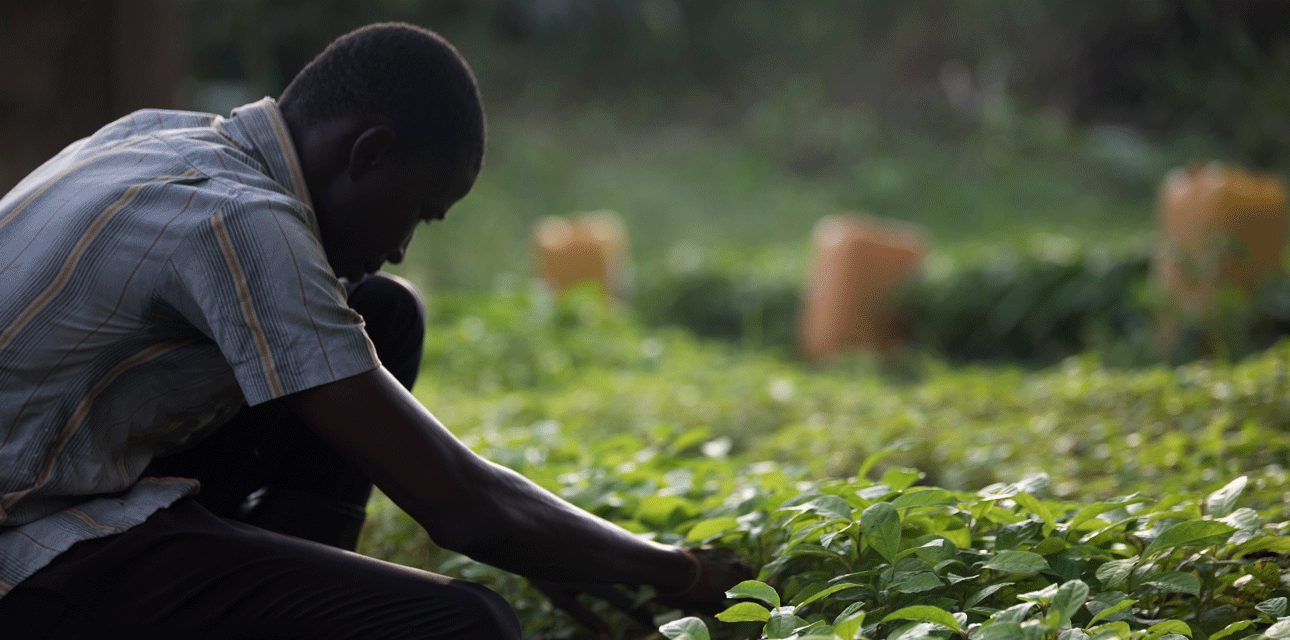At a time when more Ghanaians are joining the tens of thousands of migrants fleeing to Europe, forests could be the unlikely heroes that stem the tide of young people risking life and limb to reach often unwelcoming shores.
For 26-year old Kenneth Adjeh Yeboah, the joy of completing his tertiary education was quickly followed by frustration with the lack of suitable job opportunities. After trying and failing to find meaningful work, Kenneth decided that getting to Spain was his only hope to achieve the success he had studied so hard to achieve. “I was willing to go all in [to get to Spain], even though I was aware that there are dangers,” said Kenneth.
According to data from the International Organization for Migration, 5,636 Ghanaians arrived in Italy by sea in 2016, an increase of 27 percent compared to 2015. Within the first four months of 2018, 823 more Ghanaian migrants arrived in Italy, in search of a greener future that may or may not exist, for those lucky enough to survive the brutal journey. What makes this pattern surprising is that Ghana, unlike other countries where migrants are fleeing war or hardship, is considered a stable country. It is also one of the world’s leading cocoa producers—a sector that provides reliable livelihoods for about 800,000 families, or 13 percent of the West African nation’s total population.
And then a chance encounter with a family friend changed Kenneth’s mind and the trajectory of his life. The friend told him about the Climate Investment Funds’ Forest Investment Program (FIP) and the work it was supporting to help Ghana preserve its forests and improve livelihoods.
He also reminded Kenneth that his own family’s roots, through his beloved grandmother, were in farming. The conversation convinced Kenneth to reconsider whether the opportunities he was willing to risk his life for across oceans, were right there at home, in cocoa farming.
Motivated to give farming a try, Kenneth’s outlook on where he will build his life and realize his dream to be successful has changed. He is now investing his time and energy on building his business as a cocoa farmer.
As with all good things, however, there is a downside to Ghana’s cocoa bounty. Cocoa farming accounts for half of Ghana’s deforestation, which at about 2 percent per year, is considered one of the highest rates in the world. To fully grasp the impact of cocoa farming on the country’s forests, at the beginning of the twentieth century, Ghana had 8.2 million ha only of forest, of which an estimated 1.6 million ha remain.
Globally, the picture is just as bleak. University of Maryland, USA, 2013 research showed that the world was losing forests at a rate of 50 soccer fields per minute.
Environmental degradation is estimated to be costing Ghana about 10 percent of its GDP each year. That impact is spurring the government to modernize its approach to the agricultural sector, in a bid to respond to climate change, whilst creating livelihoods that move and keep people out of poverty.
Ghana’s push towards sustainable forests includes making 16,000 ha of cocoa farm land climate-smart by integrating shade trees, which help increase crop yields and resilience, and provides future income as timber.
Ghana has gone a step further, by also making cocoa farming gender-smart, through an innovative shade tree tenure policy that means ALL cocoa farmers, male or female, can own the valuable trees. The policy is helping reduce historical gender-based social and economic exclusion.
Martha Agyekumwaa
After 38-years working as a typist at Ghana’s Forestry Commission, Martha was grappling with the prospect of a retirement that threatened to throw her deeper into poverty. Despite her long tenure, her income did not provide the financial security she needed. Each month, when her rent was due, she had to scramble and even borrow money just to make ends meet.
Then a radio advertisement for FIP changed her life.
Through the FIP program, Martha has been introduced to sustainable farming practices, which are more sustainable than the old ‘slash and burn’ approach that contributed to deforestation.
“I’ve seen a lot of improvements in land preparation,” says Martha. Adding, “now we clear the land but leave as much of the natural foliage intact, which also helps to conserve water.”
Twice a year, Martha produces a crop of about 30,000 seedlings, which she sells to the Forestry Commission for distribution to cocoa farmers in the Bia Tano Forest Reserve.
Just two years after she heard that advert, Martha looks around the house that she built from the ground up, with income generated by her seedling business.
In addition to her own financial security, Martha now also employs 10 workers, who she takes pride in paying well. She also pays school fees for her five grandchildren. On Saturdays, when she spends the day with them, she uses their quality time together to teach them about the importance of looking after Ghana’s forests for generations to come.
This post is sponsored by Climate Investment Funds.
